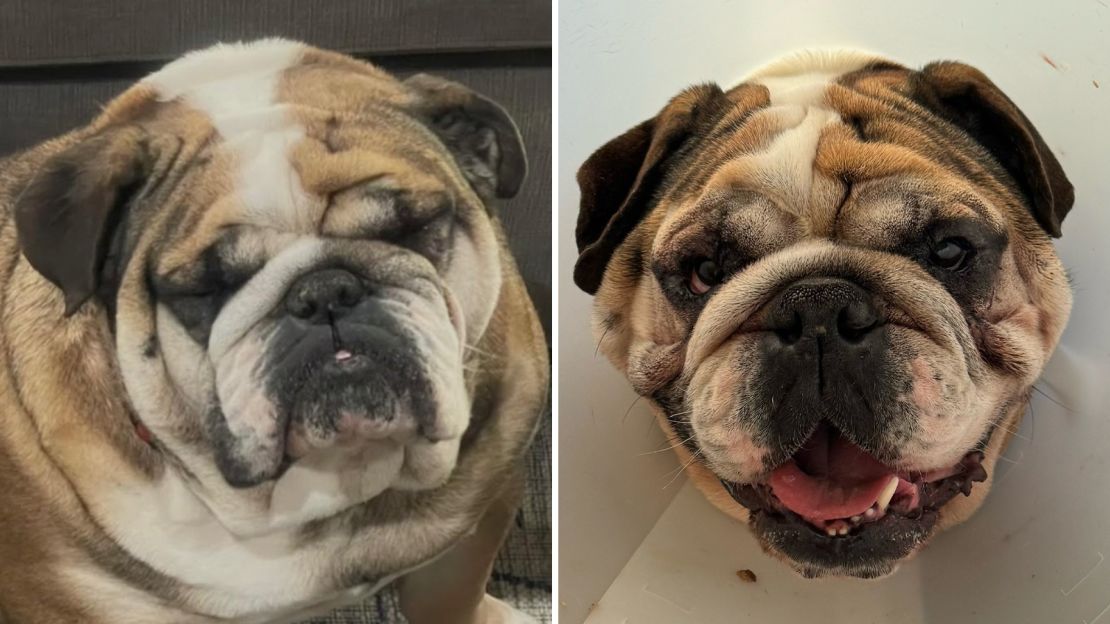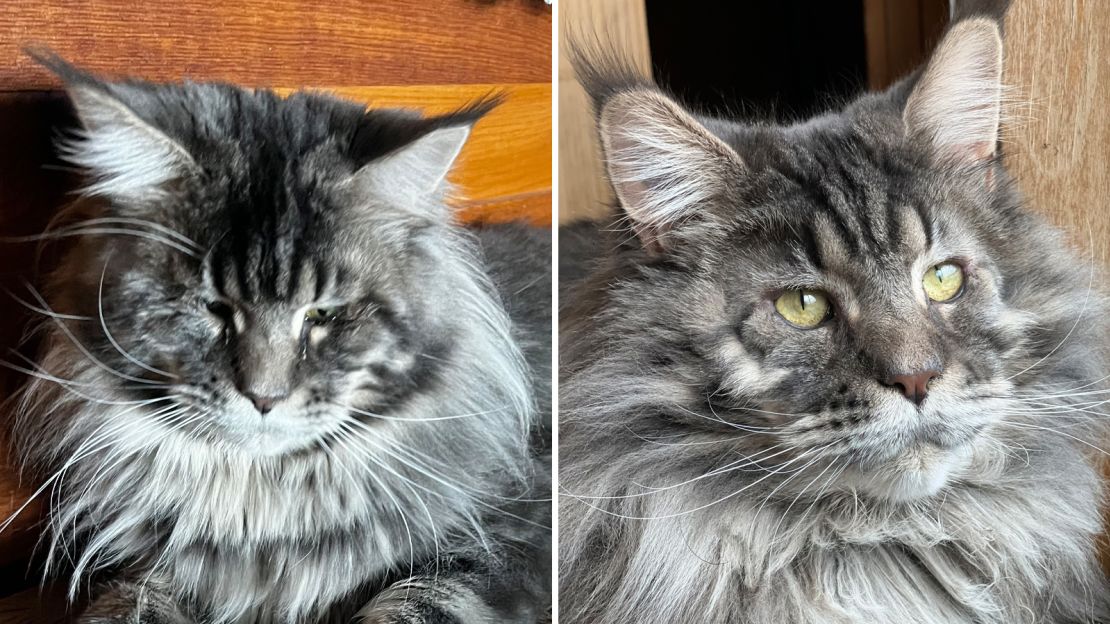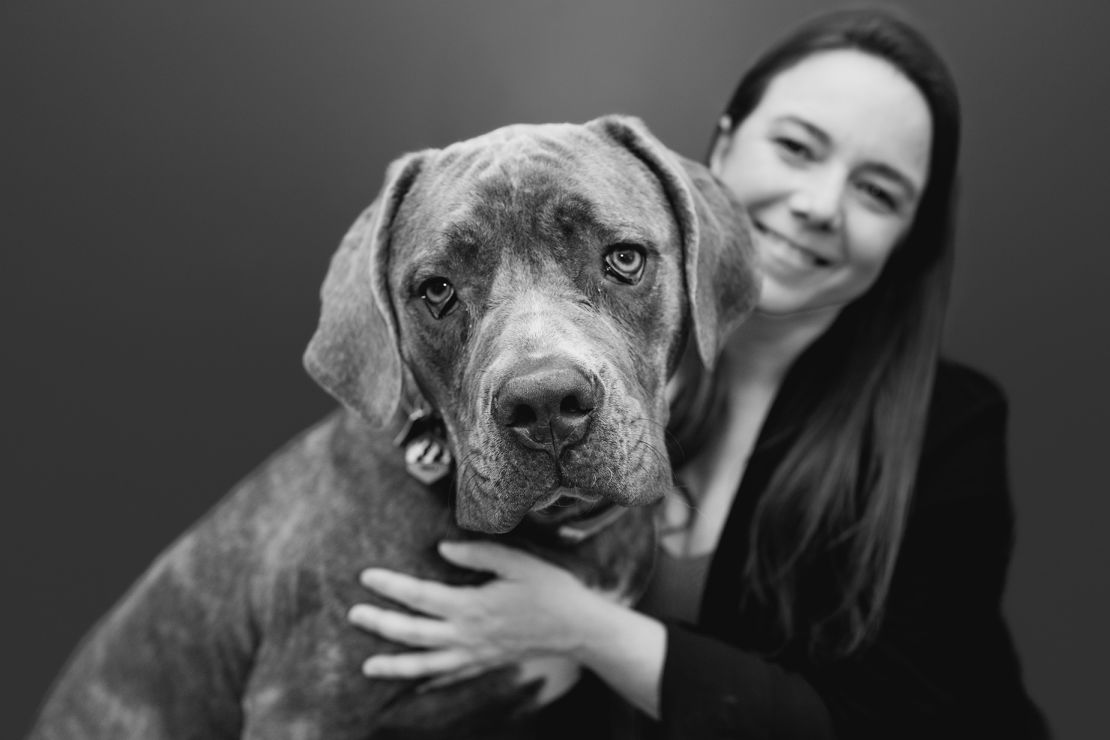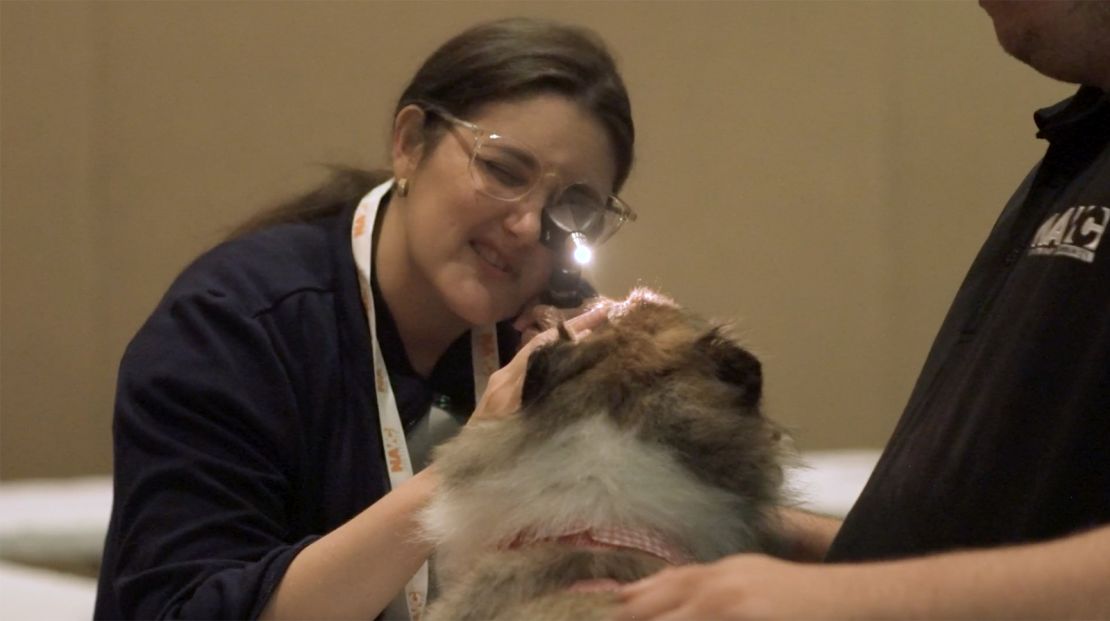
2024-07-14 18:35:02
Get inspired by a weekly roundup on living well, made simple. Sign up for CNN’s Life, But Better newsletter for information and tools designed to improve your well-being.
CNN
—
Hamilton was in such pain he refused to open his eyes. When the 4-year-old English bulldog tried, his misshapen eyelids would roll inward, causing his eyelashes to scrape against his cornea.
“Have you ever had something scratch your cornea? It is profoundly painful,” said Dr. Dana Varble, chief veterinary officer for the North American Veterinary Community, a nonprofit organization that provides learning opportunities for veterinarians.
“For these poor animals, every blink is excruciating,” Varble added. “They often squint in order to see, and that can make the eyelids turn in even more.”
After Hamilton had plastic surgery on his eyes — what humans would call a nip and tuck — he was able to see and interact with his owners with no pain.
“These nip and tucks are not cosmetic; they are critical to the health of the animal,” Varble said. “When the eyelids roll in and the lashes rub the cornea, eventually the cornea gets scarred and (this) causes visual problems, or even blindness.”

Some canine breeds are genetically more likely to develop eyelid problems, such as dogs with shortened muzzles and flattened faces — think boxers, Boston terriers, French bulldogs, Pekingese, pugs and shih tzus, to name a few.
In Hamilton’s case, his vision worsened after he gained weight, with his beefy cheeks forcing the eyelids to fold inward. However, symptoms of the painful condition can show up in puppyhood, often disguised as behavioral problems, Varble said.
“We see these 6-month-old puppies who are cranky, they’re not training well, they’re still not housebroken or getting over that puppy nipping stage,” she said. “You take a closer look, and they are constantly in pain every time they blink their eyes — no wonder they’re not paying attention to training.”
Large cat breeds with flat faces, such as Persians and Himalayans, or round, puffy cheeks such as Siberians, Ragdolls and Maine coons, can also have issues with malformed eyelids, although it’s not as common as in dogs.
A 6-month-old Maine coon named Jinxy frequently kept his painful eyes shut until his owner took him to a specialist in Athens, Georgia, trained to perform complex eyelid surgery.
“These eyelid diseases happen in people as well, and I like to tell my clients we practice them on humans first to make sure they are safe before we do the surgery on their dog or cat,” said Dr. Kate Myrna, an associate professor of veterinary ophthalmology at the College of Veterinary Medicine at the University of Georgia in Athens.
After his surgery, Jinxy was able to open his eyes and purr at his owner without pain, Myrna said.

“These are necessary surgeries. If a pet is born with too much eyelid, it’s not going to get better on its own,” she said. “While surgery sounds serious, it creates almost instant pain relief, and the eye is one of the fastest healing organs in the body.”
However, cats can be a bit more difficult to treat “because when you try to get in close with that bright light, they usually have big feelings about it,” Myrna said.
“So don’t be surprised if your vet needs to wrap your cat into a ‘kitty burrito’ to conduct the exam,” she said, referring to putting a towel around a cat for safe handling.
When Denali, a mastiff mix, was rescued at 4 months old by Varble, she had bulging red glands in the corner of each eye.
“We call it cherry eye, because it looks like a small cherry in the corner of their eye, but it’s actually the tear glands behind the third eyelid rolling outward, instead of being tucked in as they should,” Varble said.
While not always painful, the condition can be irritating for dogs and puts them at risk of injury or infection from pawing at the eye. Left untreated, the condition can lead to dry eye and the potential for blindness, experts say.
While all breeds are susceptible to cherry eye, it’s most common among basset hounds, beagles, cocker spaniels, Great Danes, rottweilers, and dogs with flat faces such as boxers, bulldogs and Pekingese.

Surgery to correct cherry eye can be relatively simple for an experienced veterinary surgeon, but some circumstances can be more challenging and require the skill of a vet trained in ophthalmology.
“Denali had a very severe case,” Varble said. “Thankfully, the specialist was able to save the gland in her eye. That’s important because if we have to remove the gland it increases the incidence of dry eye in those dogs after surgery.”
Unfortunately, there are only 500 veterinary ophthalmologists in the United States, making it difficult at times for pet owners and general vets to get the quick treatment needed, according to Varble. To overcome that obstacle, the North American Veterinary Community holds periodic trainings so a general vet can become more comfortable treating simple injuries and eye abnormalities.
“If our general practice veterinarians can handle more than just first aid for eyes, they can free up the specialists for serious cases and significant emergencies,” Varble said. “It just makes everybody more efficient and is better for the pets and their owners as well.”

Droopy eyes and signs of injury
There are other eye problems that require plastic surgery as well. Mastiffs and bloodhounds are often born with “big droopy eyelids” that refuse to close completely, Varble said.
“Their lower lids can be so far down that the eyelids literally don’t shut all the way when the upper lid comes down,” Varble said. “That can create dry spots, and the dogs are more prone to get dust and other things stuck in their eyes.”
Unfortunately, a healthy eye can turn into a vision-threatening emergency rapidly, making it important that pet owners act as soon as they notice any significant irritation, Myrna said.
“If your pet has morning sleep or goo in the corner of their eyes, or a bit of a discharge that is common with some cat and dog breeds, that’s probably not a reason to go rushing into your vet,” Myrna said.

Signs of significant injury include redness in one or both eyes, excessive squinting or twitching of an eyelid, or an eye that remains closed or is unable to open, Myrna said. Another sign is a blue haze over the entire eye that lasts more than two hours.
“It’s different than cataracts, which are a white or blue color in the pupil,” Myrna said. “When the whole surface of the eye looks hazy blue, that’s usually because it’s waterlogged, and that’s a sign of a problem that we need to look at right away.
“Remember, a scratched eye can easily become infected and can go from a superficial, easy to treat injury to needing surgery or the pet will lose the eye and lose vision — and that can happen overnight.”




